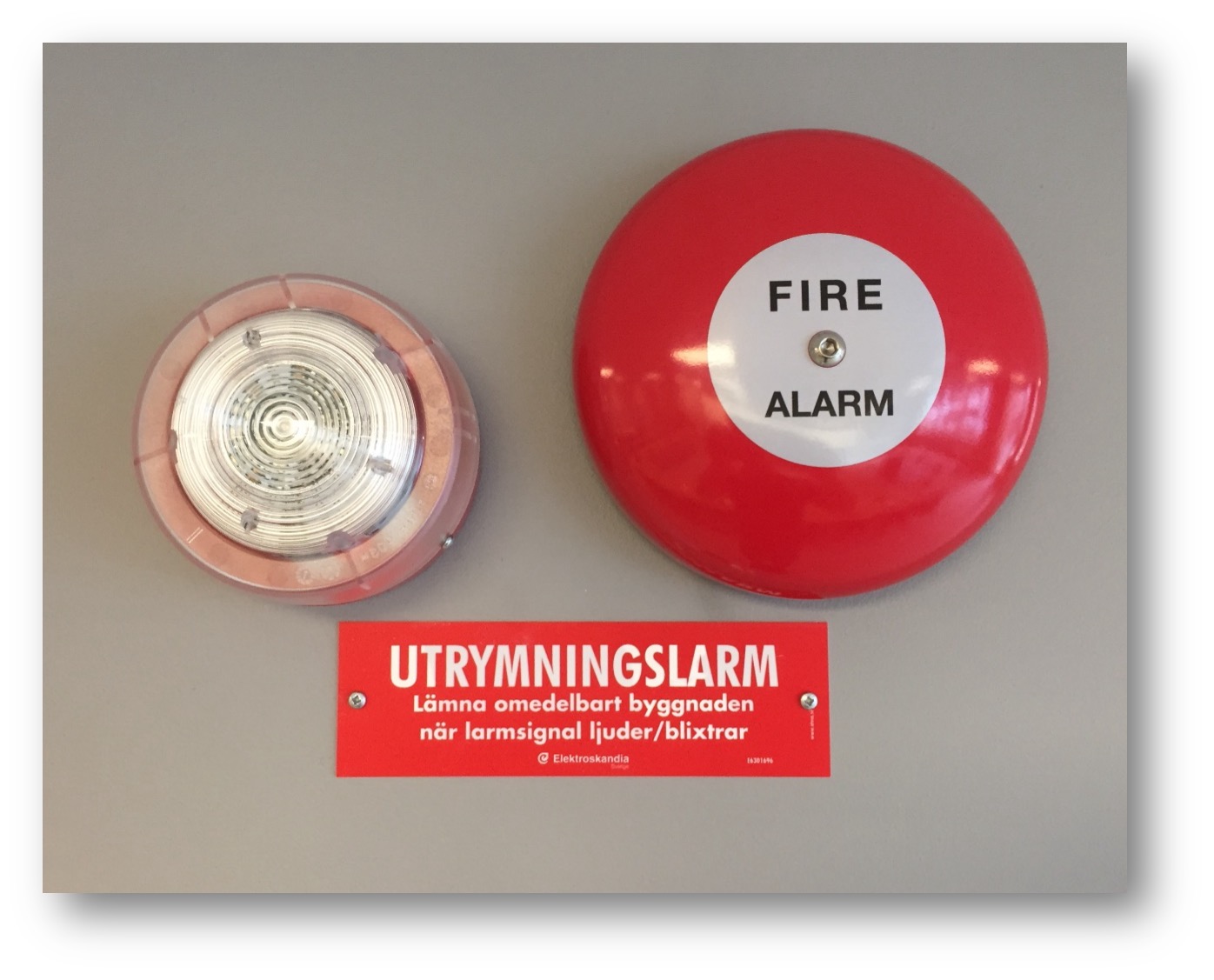
Combined visual and sound alarm. The writing on the plate is in Swedish, saying “Evacuation alarm. Immediately leave the building when the alarm is sounding/flashing”.
EU standard for hearing access in the built environment
As Hard of Hearing you need not only hearing aids to be able to take part in various aspects of society, but you also need an environment that is accessible and can assist you in different ways. To provide a built environment that is accessible and usable, there is a relatively new European standard, the EN 17210:2021. For Hard of Hearing persons, it has several useful writings on assistive listening systems, acoustics, and alarms.
The standard describes minimum functional requirements and recommendations for an accessible and usable built environment, following “Design for All”/”Universal Design” principles. The European Union has directed that all developments receiving public funds must provide accessibility. EN 17210 will be the Standard against which conformance with accessibility requirements must be assessed.

Figure from EN 17210, showing features of an accessible auditorium, including the sign for Induction loop.
Public procurement
The EN 17210 is intended to assist primarily public procurers, but also for example architects, specifiers, designers, engineers, and facility managers. It covers almost all aspects of life including schools and other educational institutions, public buildings, auditoriums, sports arenas, museums, libraries, and outdoor spaces.
For Hard of Hearing the most interesting parts are related to requirements regarding assistive listening systems, good acoustics, and visual alarms. To EFHOH members it is useful to know about EN 17210 to be able to recommend it, whenever a possibility shows up.
Assistive listening
When it comes to assistive listening systems they are defined as a direct wire system, an inductive loop, an Infrared system (IR), a Radio Frequency (RF) and Wi-Fi technology. The standard says that which technology to use depends on the type of application and the conditions. As Induction loops is the only technology that has a globally accepted installation standard (IEC 60118-4) and is the only technology that enables sound to be delivered direct to users hearing aids (with a t-coil) it is often recommended as the best solution.
The Standard lists examples for locations where assistive listening systems (ALS) should be installed. This includes meeting rooms, lecture halls, classrooms, performances halls, spectator venues for sport or films, reception counters, service desks, courts, museums, religious buildings, lifts, PA systems, payphones, HAC phones and door entry systems. Signage showing the presence of ALS is important.
Acoustics
On acoustics the EN 17210 underlines that environments should allow information with a high speech transmission index (STI). Where the acoustic environment is regarded as particularly important, sound absorption, suitable lighting, color and visual contrast should be provided in order to benefit all building users.
The functionality of the acoustic and electromagnetic environment shall also support the use of assistive devices, such as ALS.
Alarm equipment
Visual alarms shall be provided in all public premises that are equipped with sound alarms. That means that clearly visible light strobes/beacons shall be installed in all public premises that are equipped with sound alarms, according to the principle of multiple sense, and additionally in washrooms and in other locations within a building where people are alone, and also in noisy environments.
For hotels the standard says that they shall provide assistive devices for Hard of Hearing persons, such as vibrating/flashing alarm clock, vibration pads, etc. that shall be compatible with the telephone and fire alarm system.
Other useful requirements
When it comes to lightning, the standard points out that for persons who are Hard of Hearing good artificial lighting is important for lip reading and also for sign language users. Where speech communication is needed, e.g. when using intercom systems, alternative access modes shall be provided following the multiple-sense principle.
A helpful annex points out the importance of management and maintenance issues, such as giving staff relevant education on the handling of assistive listening systems.
The EN 17210 is a rather large document, some 300 pages, available in English, French and German. As most standards it is not free of charge but can be bought through national standardization organizations.




